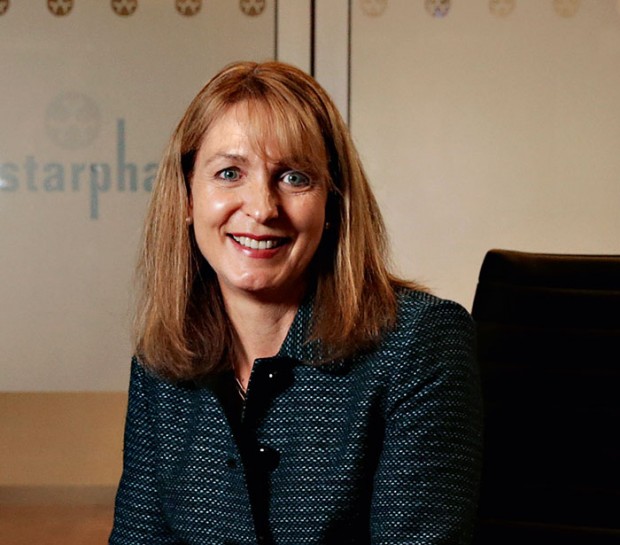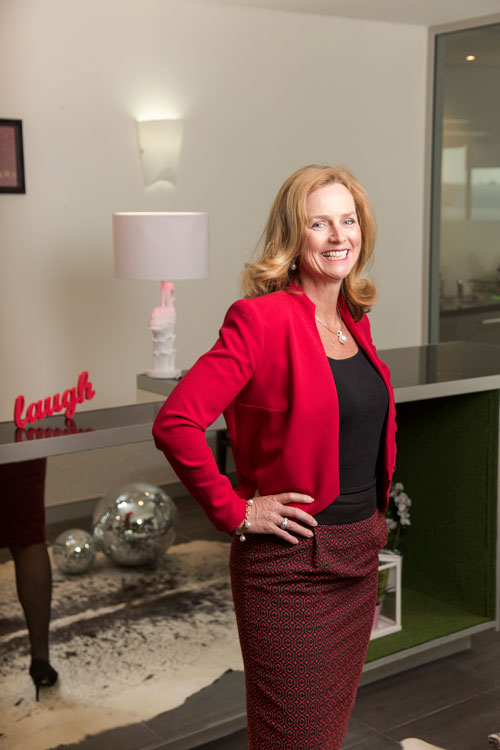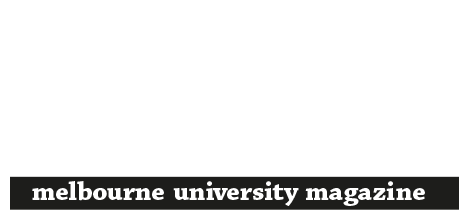A work in progress for women

Illustration: Frank Maiorana
BY KIRSTY SIMPSON
Dr Jackie Fairley has built a career ignoring gender stereotypes, rising to the top of Australia’s corporate elite on determination and hard work.
Fairley, chief executive of biotech firm Starpharma and a board member of the Melbourne Business School, started working life as a vet. After first studying science, where more than 50 per cent of the graduates were female, she was surprised to find only a quarter of her fellow students at the Melbourne Business School’s MBA program were women.
“At that time there were certain stereotypes in the views of students. One of the things that motivated me was to prove a fellow student wrong. [He said] that girls can’t do finance,” Fairley recalls. “The fact that I had beaten him in finance all the way through was irrelevant. This was 1992, and another [male student] said that no companies should have women on their boards. There were some pretty extreme views, you know the sort of thing, that you shouldn’t get a scholarship because your husband is a doctor.”
In the best response to such beliefs, Fairley (BSc 1982, BVSc(Hons) 1987, MBA 1992) went on to win the Clemenger Medal for highest overall marks throughout the Melbourne Business School’s MBA program, the third woman in a row to do so. Given the program’s gender skew, this was more than against the odds.

Dr Jackie Fairley
But glass-ceiling breakers remain in the minority. Across Australia, women make up barely a quarter of the top echelon of management of larger organisations (those with 100 or more employees), and the gender pay gap remains stubbornly higher here than in other OECD countries.
Neither Fairley nor Naomi Simson (BCom 1984) – entrepreneur, motivational speaker and ‘Shark’ on Network TEN’s business reality program Shark Tank Australia – feels that overt sexism has held her back. They found it more a motivating factor than a hurdle. Yet it is far from easy to pinpoint the reasons why the journey to equality in the top ranks of business has been so slow. Many initiatives have been taken to lead by example in addressing this imbalance in executive ranks and boards, notably through the Male Champions of Change mentoring program, which aims to level the playing field. Latest figures from the Australian Institute of Company Directors show that 20 per cent of board positions in the top 200 listed companies are now filled by women, compared with a mere 8.9 per cent in 2009. And, in the first six months of 2015, 26 per cent of new positions were filled by women. While this is a substantial improvement, many still find progress agonisingly slow.
The 2014 World Economic Forum’s Global Gender Gap Report ranked Australia 24th out of 142 countries when judging equality against economic, political, education and health criteria. And though the principle of equality may be sufficient motivation for most of us, it’s worth noting that gender diversity – not just on boards but throughout business – is linked to increased productivity and work satisfaction, according to the Workplace Gender and Equality Strategy Project at the University of Melbourne’s Centre for Workplace Leadership.

Naomi Simson
The Research Fellow in charge of the project, Dr Jesse Olsen, says he suspects gender imbalance is due more to embedded sub-conscious cultural biases than any widespread cases of overt sexism. “There’s a lot going on and the complexity is what makes it hard to address,’’ he says. “Culture is a really big piece and we really need to examine how the Anglo-Saxon culture has viewed gender roles. I think it’s less about explicit discrimination, but there is stuff going on in our heads about what men and women are supposed to be like. We still have this idea about the women being the care giver, and while it’s getting weaker over time, it still persists.”
Growing up, both Fairley and Simson had strong women around them, and both note the importance of role models. Simson’s mother, Lorna Elms, worked in the mathematics department at Monash University in the 1960s. Fairley’s mother was Professor Priscilla Kincaid-Smith AC CBE (MD 1968, LLD 1991, University College), renowned for finding a link between headache powders and kidney damage and campaigning against their use. She was also a past president of the Australian Medical Association and, in 1975, became the University’s first female professor.
While their mothers were clearly shining examples, both women also cite the importance of other mentors and role models within the business community. When Fairley was younger, giving birth to her now-teenage children, it was during a period of rapid promotion. With 120 staff to manage, she took only a few weeks of maternity leave for each of her children. For her, it was important to see that other women in business were also able to sustain a career while rearing children.
“Recent research from Harvard found that the daughters of successful women earn more and the sons tend to have more stable relationships. [My mother] was very important to me [as a working female role model],” she says.
But determining what equality actually looks like is vexed.
“For me gender equality is not about numbers but opportunity,” says Fairley. “There are sometimes reasons why some workforces have more or less. Numbers are more a surrogate for equality. If you look at engineering classes you are likely to find fewer women, and I suspect much of that is not sexism, but self-selection.
“There are probably sectors that are better and worse than others. The health sector is better. There are some sectors, like mining, that are not so good. In my experience, and when I look around, I can’t see any [vestiges of sexism]. I wouldn’t tolerate it.”
At Starpharma, 53 per cent of the staff are female, while 37 per cent of executive positions and 42 per cent of leadership roles are held by women. So what should be done across the business world to improve diversity? While Fairley disagrees with setting quotas for the number of women who must be employed in senior ranks, Simson and other high profile women believe a more even gender balance won’t be achieved without firmer action.
Another prominent business figure, Elizabeth Proust AO (LLB 1985), who is now chairman of Nestlé Australia and the Bank of Melbourne, recently told the ABC’s AM program: “Who would have thought we’d still be talking about this in 2015? I think, whether you call it quotas or targets: without some mandating of or for gender diversity – and remember, diversity is much more than gender – then I think we probably still will be talking about it in 2025 and beyond.
“So I think that we need targets or quotas to ensure that companies and all organisations focus on how they comprise their top teams: both boards and senior management.”
Simson goes further. She advocates “naming and shaming” the worst performers to spur more employers into action.
“We already have that information,” she says. Since 2012 all businesses with more than 100 employees are legally required to report their gender equality performance to the Workplace Gender Equality Agency.
After the recent launch of an ANZ Bank report into financial gender equality, Simson noted that one of its most alarming findings was that women earn 4 per cent less in their first graduate job than men with the same qualification.
“A full-time working woman will earn $295 per week less on average than a full-time working man,’’ she blogged. “That is $15,000 over the course of a year. Extended over the course of a typical 45-year career, that gap becomes a staggering $700,000.”



